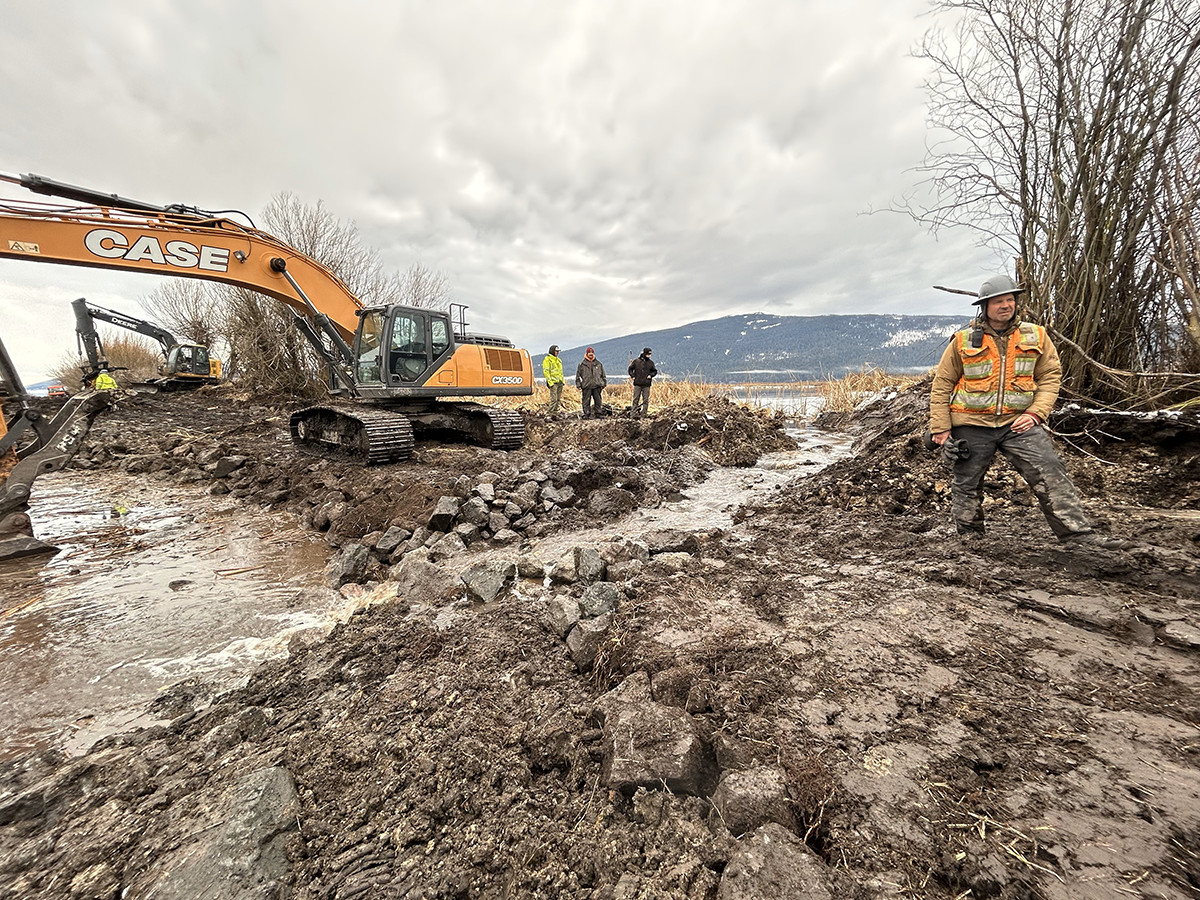May 02, 2023 •
2
min read
 It’s shaping up to be another challenging year for Tule Lake and Lower Klamath national wildlife refuges. These hugely important stopovers for migratory birds along the Oregon-California border went completely dry last year for the first time in the refuges’ 115-year history.
It’s shaping up to be another challenging year for Tule Lake and Lower Klamath national wildlife refuges. These hugely important stopovers for migratory birds along the Oregon-California border went completely dry last year for the first time in the refuges’ 115-year history.
Unfortunately, the watersheds that supply the refuges didn’t get hit with as many of the drought-ending atmospheric river storms that hammered the rest of California this rainy season. But the good news is there was enough water to fill Unit 2 this spring on Lower Klamath National Wildlife Refuge. The large wetland unit received water thanks to a pumping station Ducks Unlimited recently installed and the efforts of California Waterfowl Association, the Klamath Drainage District and the U.S. Fish and Wildlife Service to make the irrigation return water available.
Ducks Unlimited will install four more pumps -- two on Lower Klamath and two on Tule Lake -- in the months ahead. In total, the pumps cost $2.6 million in funds the U.S. Fish and Wildlife Service provided. The water in Unit 2, along with water separately filling Tule Lake’s Sump 1B, came just in time for the spring migration as well as the resident waterfowl nesting season.
While helpful in the short term, the rest of the refuges’ wetlands remained largely dry this spring.
There’s a long way to go to resolve the underlying political and regulatory issues that have for years stopped water from flowing to these refuges that are so incredibly vital to millions of migratory birds. Drought and regulations that govern how water is shared in the Klamath Basin have caused the refuges to be gradually starved of water over the years. Both refuges were closed to waterfowl hunting last year.
The two adjacent refuges are all that are left of two huge natural lakes that were drained early last century. In 1908, President Theodore Roosevelt set aside the 50,913-acre Lower Klamath National Wildlife Refuge as the nation’s first federal waterfowl refuge. Founded in 1928, Tule Lake National Wildlife Refuge is 39,116 acres. Just a few decades ago, the refuges drew nearly 7 million birds each year. Bird numbers have crashed as the refuges have been cut off from water.
Ducks Unlimited continues to work with tribes, farmers, refuge staff and regulators to find common ground centered around bringing water back to the refuges and restoring wetlands in the Klamath Basin.
Ducks Unlimited Inc. is the world's largest nonprofit organization dedicated to conserving North America's continually disappearing wetlands. Established in 1937, Ducks Unlimited has conserved 16 million acres thanks to contributions from more than a million supporters across the continent. For more information, visit www.ducks.org, and be sure to Follow DU's Twitter feed – @DucksUnlimited and @DUConserve – to get the most up-to-date news from Ducks Unlimited.
Media Contact:
Ryan Sabalow, Western Region - Communications Coordinator
(916) 805-1210
rsabalow@ducks.org
 It’s shaping up to be another challenging year for Tule Lake and Lower Klamath national wildlife refuges. These hugely important stopovers for migratory birds along the Oregon-California border went completely dry last year for the first time in the refuges’ 115-year history.
It’s shaping up to be another challenging year for Tule Lake and Lower Klamath national wildlife refuges. These hugely important stopovers for migratory birds along the Oregon-California border went completely dry last year for the first time in the refuges’ 115-year history.


